I recently stopped into my local plant store and stumbled across the Never Never plant. It was one of the most unique, fun looking plants I’ve seen in a long time! I knew I had to learn more about this variegated beauty and share it all with you!
The Never Never plant is an absolutely breathtaking tropical plant that is sure to turn the heads of every house guest you have. The best part is how simple it is to care for this houseplant! (You can thank us later!)
Read on for an in-depth plant care guide to learn helpful tips and how to care for a never never plant.
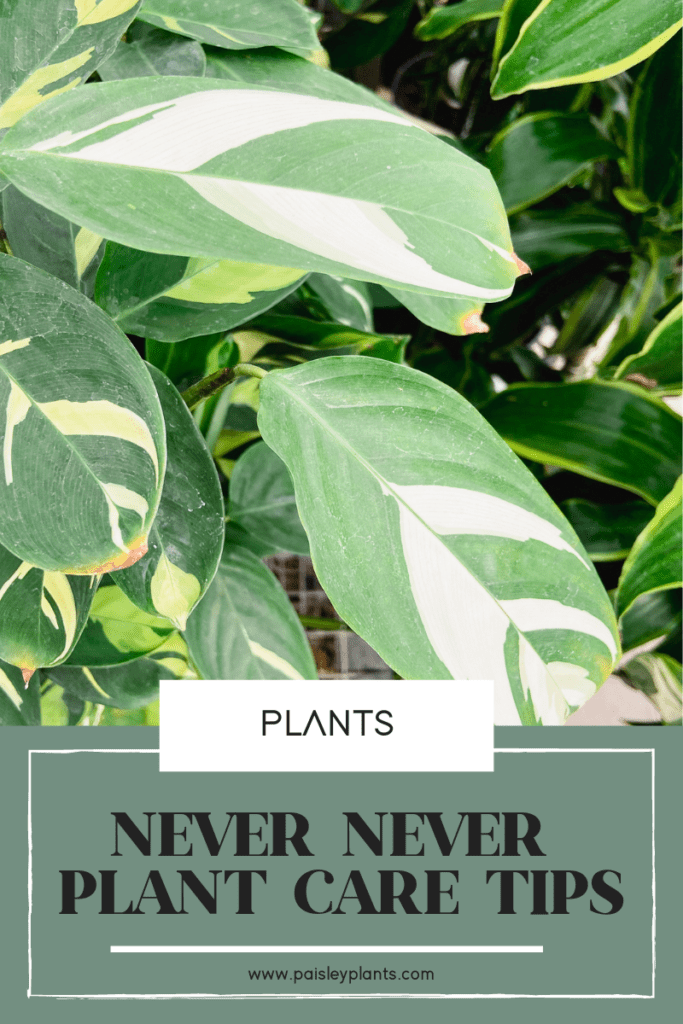
This post includes affiliate links.
Table of Contents
Background
The Ctenanthe lubbersiana, or more commonly known as the Never Never plant, is part of the perennials family. These houseplants are also a tropical plant that is originally native to Brazil.
Aside from the Never Never plant, other common names for the Ctenanthe lubbersiana include the bamburanta and simply the ctenanthe.
The Never Never plant is identifiable by their long, spear-shaped leaves. Their leaves are green with silver stripes throughout them. This is what stopped me in my tracks!
When grown as a houseplant, you can expect your Never Never plant to reach a height between 3 to 4 feet tall.
If their variegated foliage beauty is not enough to sway you, the Never Never plant is non-toxic to both humans and pets. These are the perfect houseplants; feel free to keep them indoors around your children and furry friends.
Looking for more pet friendly plants? Here are some of my favorites!
Never Never (Ctenanthe) Care
Sun & Light
Provide your Never Never plant with bright, indirect light. It is important to keep this plant away from harsh, direct light from the sun. Exposure to sun can cause the leaves to burn, which will take away from the beauty of the plant’s foliage.
It’s best to keep these plants indoors as houseplants, but if you plan on planting them outside, try to put them in a location in the shade. Do you best to avoid areas that receive direct sunlight.
Soil Type
The Never Never plant is very forgiving of most soil conditions, as long as the soil is well-draining (water soluble). However, if you want the best growth results for these plants, it is recommended to provide your Never Never plant with a household soil that is rich in organic matter.
Select a soil with a pH range that is acidic to neutral (6.0 to 8.0).
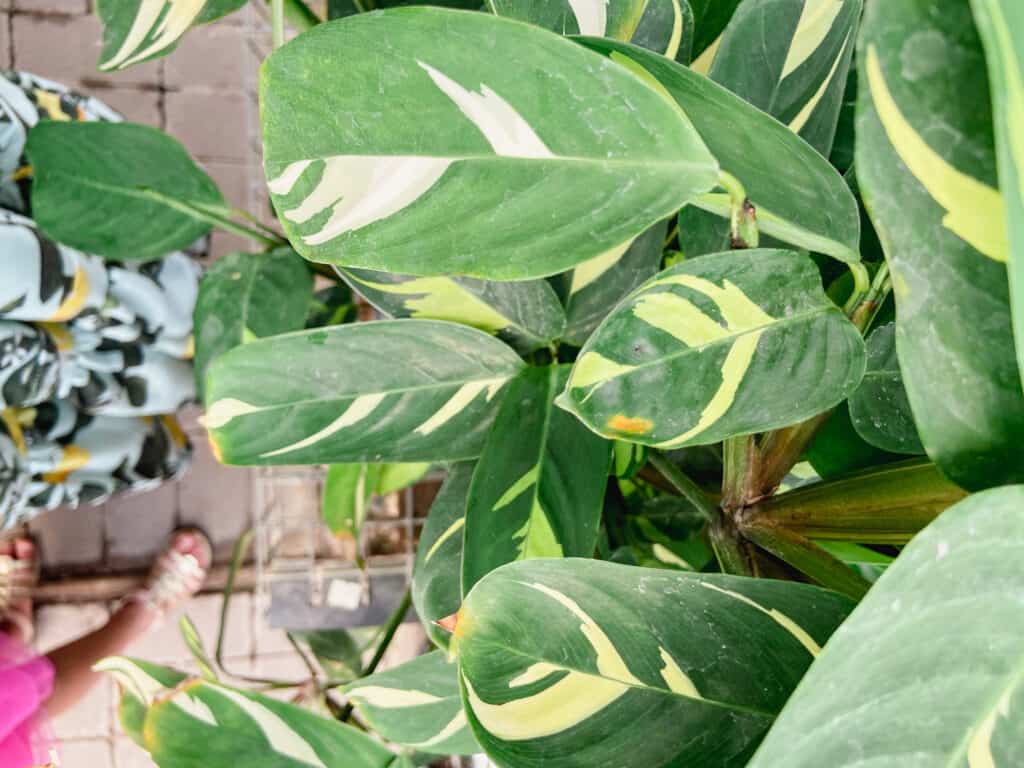
Water
The Never Never plant enjoys an even level of moisture; it is important to never allow the soil to dry out entirely. A good rule of thumb when watering these plants is to wait until the top layer of soil has dried before giving your plant more water.
When I water my smaller houseplants, I prefer to do so in the sink, allowing excess water to drain out of the pot before putting them back. If you have a drip tray, don’t forget to empty this after a few minutes so the roots aren’t soaking in the water for too long.
In order to keep those leaves looking beautiful and green it is recommend to use filtered water or distilled water.
Fertilizer
Your Never Never plant will benefit greatly from a routine fertilizer treatment in order to encourage vigorous, full growth. It is recommended to only feed your houseplant during the spring and summer months, when your plant is in active growth and needs the additional nutrients.
Select a houseplant fertilizer with a balanced NPK ratio. Read the instructions on the package and dilute the fertilizer to half of its strength. Apply this fertilizer monthly throughout spring and summer during your usual garden care routine.
Temperature & Humidity
Because the Never Never plant is native to the tropics of Brazil, it is no secret these plants thrive on warm, humid air conditions. The ideal temperature range to keep these plants healthy and happy is between 55° F to 85° F, which is more than realistic for the average household.
Make sure that the temperature never dips lower than 55°; avoid placing your plant near drafty windows or air conditioning vents.
Humidity also plays an important role when you care for a never never plant. Maintaining at least 50% humidity is essential for your plant’s health. Leaf curling can occur if the humidity levels are not in the medium to high range.
To avoid leaf curling, a good solution could be placing a humidifier in the same room as your plant In order to ensure an optimal humidity level.
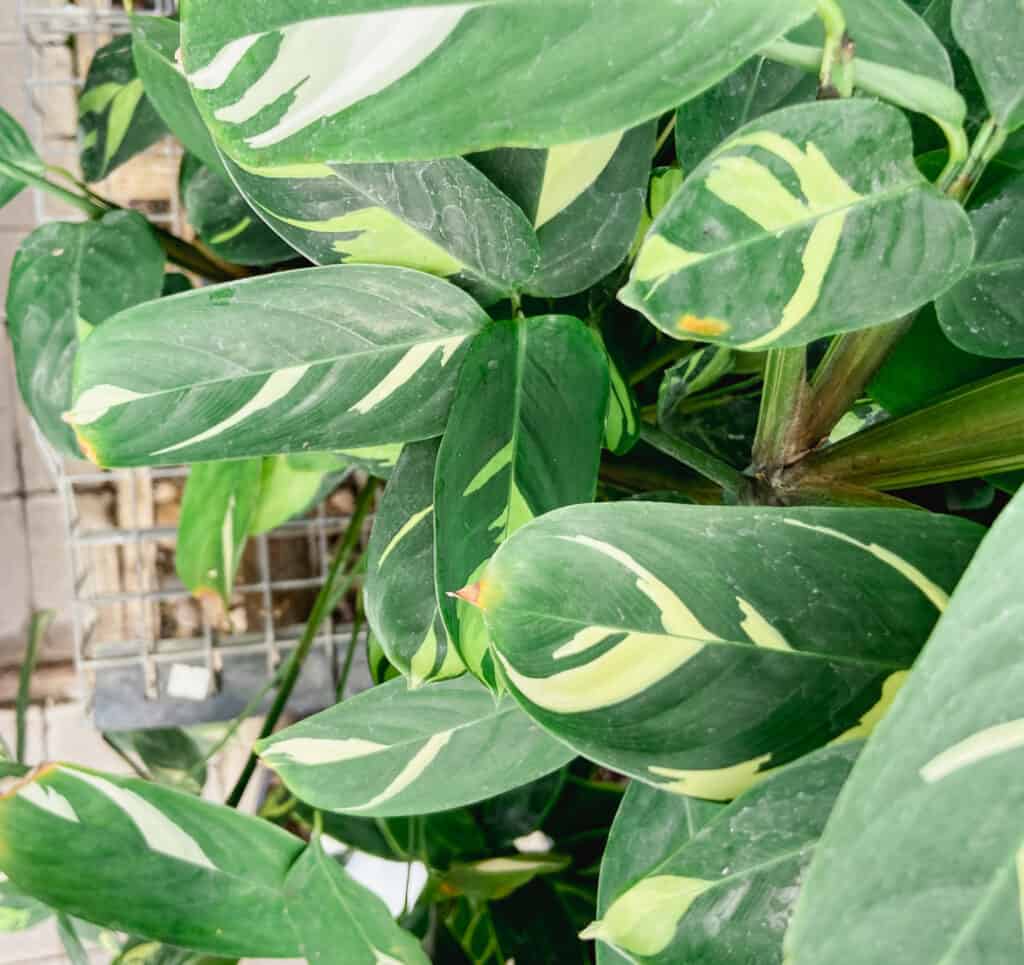
Pruning Foliage/Leaves & Maintenance
Pruning is not a necessity when it comes to the never never plant. However, it is always recommended to prune the plants whenever you notice any foliage that is dead or damaged. If you come across any dead leaf tips, it may be due to not giving your plant enough water.
Sticking with a regular pruning care schedule will help these plants redirect its energy towards developing new, healthy growth.
You may also notice a small flower here and there throughout the year under good growing conditions. It is not common to see a lot of flower activity on these houseplants though.
We always recommend before cutting your plant to sterilize your pruning equipment. Simply wiping your tools with rubbing alcohol is enough to prevent detrimental diseases from harming your never plant.
Choosing a Container & Repotting Plants
The most important part of selecting a pot for your never never plant is drainage. Drainage helps keep the soil moist, but not waterlogged. Overwatering is a common occurrence in plants such as the never never plant.
Having a pot with at least one drainage hole will help the excess moisture escape from the pot. Trapped moisture is one of the leading causes of root rot. The exact size of the plant will largely depend on the size of the container to allow for the best root growth.
Even with small containers and pots, these plants can easily grow to several feet in size.
You’ll find yourself having to repot your never never plant around every 1 to 2 years. If you notice that your plant has become root bound (roots begin growing from drainage holes), then that is a clear sign that repotting is necessary (perhaps even before the 1 to 2 years mark).
Transfer your plant to a new pot, selecting a planter that is slightly larger than the previous one. Terracotta plant pots are very popular for these types of plants, especially if you are in the market for outdoor plant pots. Indoor plant pots come in a variety of shapes and colors that will bring warmth to any space.
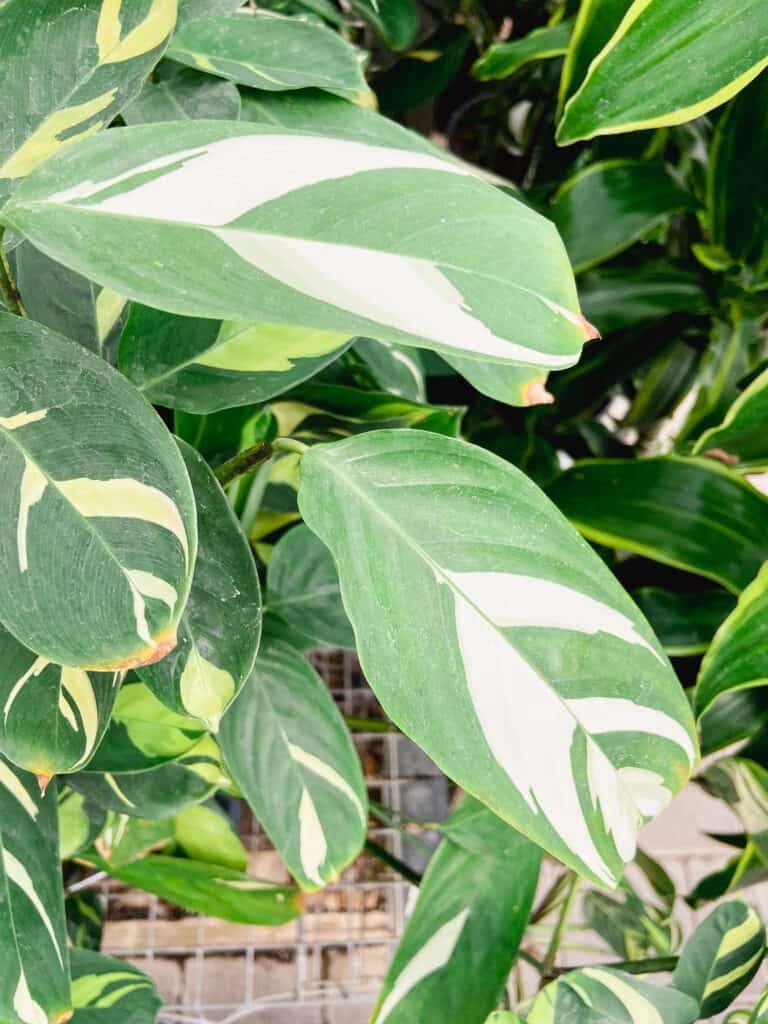
How to Propagate a Never Never Plant
The never never plant can be propagated by division. Division involves taking mature plants and dividing it into separate sections.
While this may sound like an intensive process, it is quite easy and straightforward, we promise!
Follow these steps to propagate your never never plant:
- For this, you will need your never never plant to be mature, fully grown, and completely healthy. Dividing an ill or immature plant is a recipe for failure, and can result in you losing your plant entirely.
- Remove your plant carefully from its pot; shake the soil off the roots to help loosen them up.
- Decide where you are going to make the cuts; each section should have a decent amount of roots in order to sustain life.
- Using a sterilized garden knife, cut the plant into smaller sections. At most, cut four sections of the plant.
- Prepare separate pots filled with pre-moistened soil. Transfer each individual sections into their own pot.
- Keep the soil consistently moist for the next few weeks. Your never never plant has undergone a serious amount of stress; keeping the soil moist will help mitigate this stress and reduce transplant shock.
- Place the pots in a location with bright, indirect light. Within a month’s time, you should start to notice new growth and beautiful leaves forming.
Common Pests
Common examples of pests that tend to affect the never never plant include mealybugs, spider mites, and thrips. These are common sap-sucking pests: pests that latch onto the foliage of your plants and suck out the nutrients. While these pests are a little annoying to find on your plant, they are very treatable with common household methods.
Mealybugs are known to leave behind a sticky, cotton-like residue on the plants and leaves. This residue can swiftly be cleaned by wiping the plant down with rubbing alcohol.
You can also mix a couple tablespoons of dawn dish soap and add a gallon of water to create a DIY pest spray.
In addition, many gardeners turn to neem oil when they find a pest infestation on their plants. Neem oil is a horticultural oil that is a natural pesticide as well as a fungicide that can be found at your local plant shop or on Amazon.
Spray the plants and foliage a few times to completely wipe out your pest problem and keep future issues at bay.
Common Diseases
Plants that require frequent watering such as the never never plant can often be susceptible to overwatering. Sometimes plant owners can be unaware that they are giving their plants too much water, unsuspectingly exposing them to possible disease.
One of the most common diseases associated with overwatering is root rot. Root rot is caused by the combination of too much water and not enough drainage.
Follow these simple steps to help alleviate your plant’s root rot:
- Gently remove the plant from its pot and shake the excess dirt loose to view the roots.
- Rotted roots are black and mushy in texture, as opposed to healthy roots which are light and firm
- Using a sterile pair of pruning shears, cut away any roots that appear to be rotted.
- When all signs of root rot have been pruned, repot your plant in a cleaned out pot (with drainage holes!) and use fresh, new soil.
- Keep the soil lightly moist for the next couple weeks to reduce shock. Continue to check on the soil periodically to make sure it hasn’t completely dried out.
The easiest way to stop root rot is to prevent it from ever happening in the first place. It is important to use proper watering techniques on plants: wait until the top layer of soil has dried before watering your plant.
In addition, make sure that your pot has unobstructed drainage holes, many plant owners use plant pot liners to help with this type of issue.
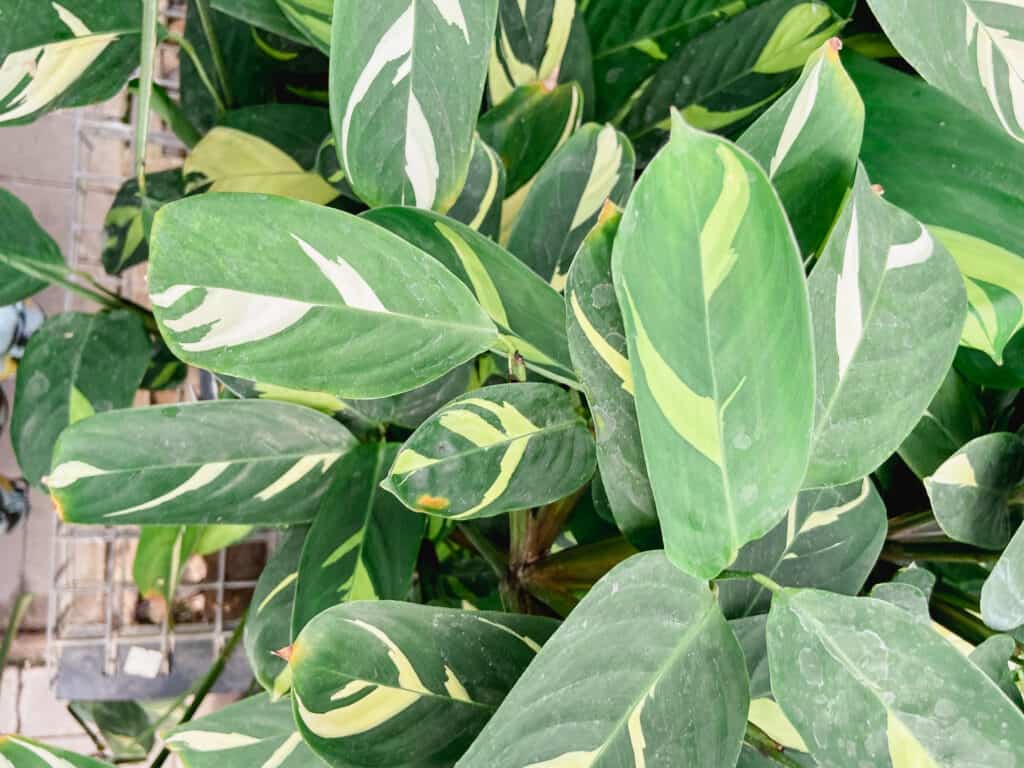
Where to Buy
- Etsy
- Local Plant Shop
FAQ
Being a part of the prayer plant group (a group that includes other plants such as the Goeppertia, Maranta, and Stromanthe, the Never Never plant’s leaves do a unique thing when the sun goes down. The leaves of the plant fold together, very similar to two hands in a prayer position.
A Never Never plant will thrive in locations with dappled, indirect sunlight and warm, humid air temperatures. If you plan to grow a never never plant outside, you should definitely take into consideration this plant’s climate needs.
The Never Never plant is hardy to USDA zones 11 and above, making this quite difficult to grow and care for outdoors unless you live in a very hot climate. For the average plant owner, it might be a little easier to plant your never never plant indoors, where you can control the air and light conditions to the plant’s needs.
Light. Direct sunlight can damage your never never plant and its foliage, so bright, indirect light is ideal for these indoor houseplants.
In Conclusion
It’s size and beauty might make the Never Never plant appear to be an intimidating choice, but trust us, you’ll soon find that after following our tips in this guide they are very low-maintenance!
How could you not fall in love with these plants? The Never Never plant is a gorgeous houseplant that is extremely satisfying to own and care for. So sit back, and marvel at those stunning leaves!
Want more plant fun? Head to one of these plant posts!

